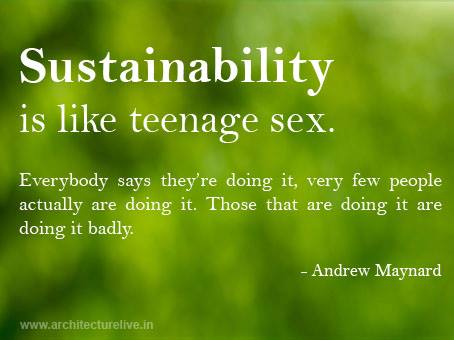Book review by Ar. Himanshu Burte

Ann Thorpe’s ‘The Designer’s Atlas of Sustainability: Charting the Conceptual Landscape Through Economy, Ecology and Culture’ attempts a difficult task- to provide an overview of the conceptual landscape of sustainability from a designer’s perspective. She does well. She covers a broader than usual range of issues of relevance to the survival of the planet, and therefore also of designers. And while she writes mainly for the developed world, much of what she says is worth debating in the developing world.
Thorpe approaches the designer’s task by taking up ecology, economy and culture as the 3 aspects of our reality that affect the goal of sustainability. While one section is devoted to each of the three areas respectively, Thorpe also dwells on the way all three are interconnected. Impressively for a generalist, Thorpe is spot on with many of her observations about the specific aspects of each of the 3 spheres. Her main skill lies in bringing together ideas from different sources (with different degrees of scientific validity) to shape her own argument. What results is a collection of ideas and suggestions that will certainly make designers think about their own life, and working style as well as the product of their efforts? Of course, many have already been doing so. Many architects in many places, are already accounting for their own ecological impact (or footprint) as individuals and professionals while assessing that of their projects.
The first section, devoted to ecology, sets out the ground rules simply and effectively. ‘Earth is an ecosphere: the source of all materials, the repository for all discards’ (p 26). Thorpe also points out that an important issue today is that we have been taking materials out from the lithosphere and spreading it out to the other spheres. This is a profoundly important point, very simply put. Every time we build we cause stone or sand to be mined (or consume oil drilled from the ground) and its particles to be spread as waste into the atmosphere and the biosphere. The problem is, the other spheres do not have the capacity to digest these unwelcome exports from the lithosphere.

For this problem, typically, Thorpe also identifies a strategy to the issue: ‘Why not borrow a concept from nature by classifying every material as a nutrient?’. With this approach, she suggests we could keep organic nutrients and ‘technical nutrients’ (like metal and plastic) in separate life cycles and prevent them from mixing with each other.
In the matter of culture, Thorpe suggests that design can reorient people away from commercial culture. Commercial culture has made people seek fulfilment in the products of the marketplace- merchandise and media for instance. Design, she believes can help turn people inwards, or towards nature. She offers some well-known and new ways of approaching this. Thorpe begins the section on ‘Economy’ with the reasonable observation that each of the 3 sectors of the economy- the private, the public and the not-for-profit- have their own values. She correctly identifies the focus of the private sector on maximizing profit at the cost of other values as an important obstacle to achieving sustainability. As an alternative, she suggests that designers explore ways of organizing practice outside the capitalist market economy. Non-profit or governmental clienteles are more likely to work with or support sustainable values. Like some of her other suggestions, this is debatable if considered the ‘only’ or ‘best’ solution; but it certainly is one alternative for the designer concerned with sustainability.
The book is valuable since it puts many different debates in a single perspective that designers can access easily. Thorpe pulls together different kinds of research and offers new ways of thinking about our life and work as designers. Each of her broad observations and suggestions is clearly articulated. This helps, because they are also eminently debatable, as everything connected to sustainability is. Her generalizations often appear oversimplified. And yet, they do withstand closer scrutiny given her sources and purposes. Perhaps the simplicity of her writing also reflects a basic fact related to sustainable architecture, at least in India- it is most emphatically not rocket science. In fact, making rocket science of it is likely to make it unsustainable.






